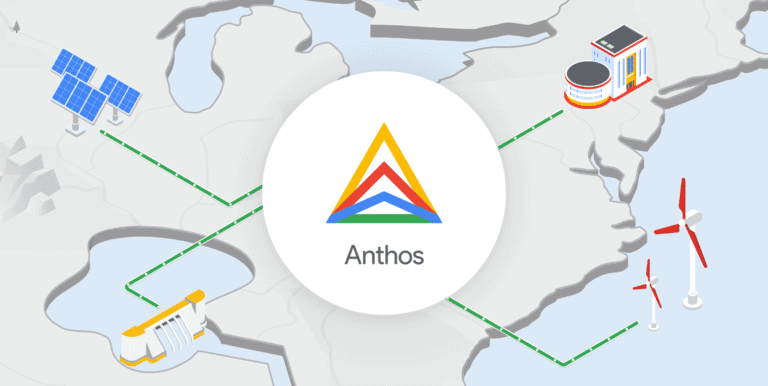Google has further expanded the capabilities of its hybrid cloud development and management platform Google Anthos. The update focuses on modernizing the most critical business applications. This needs to be faster and more flexible.
With the Google Anthos platform, companies can develop cloud-based applications – in the form of containers – and manage them based on Kubernetes in hybrid environments. So both on-premise and in other (multi) public cloud environments. This allows companies to choose the right infrastructure for their applications.
New AI capabilities
For the Google Anthos platform, the tech giant has now announced several new solutions. This will enable developers to quickly and efficiently develop, manage and deploy applications in hybrid environments using the most up-to-date technology.
The tech giant is strongly committed to ‘hybrid’ AI solutions. A solution that is now being added to the application development platform is Speech-to-Text On-Prem. With this solution, Google users will, for the first time, gain full control over voice data located in their data centers. As a result, companies are more able to use the service and comply with regulations regarding data residency and compliance.
Furthermore, Speech-to-Text On-Prem should ensure that Google’s voice recognition models can be used more accurately, with less volume and with less computing power required.
Availability on bare-metal
In addition to new AI services, Google Anthos is now also available (in beta) on bare-metal servers. This allows the hybrid cloud application platform to run on-premise and on edge locations without a hypervisor. This, of course, offers many new possibilities for cloud and edge environments.
Another important new service is the arrival of Anthos attached clusters. This service allows developers to bring Kubernetes-compliant clusters within the platform. This enables them to manage every Kubernetes cluster via the Google Anthos control plane. This brings more centralized management for, among other things, configurations and service mesh, according to the tech giant. It also allows developers to take more advantage of the platform’s automation ring tools.
Other updates
The updates of Google Anthos also speed up development processes. For example, the Google Cloud Code Integrated Development Environment plugins are now integrated with Cloud Run for Anthos. This makes it possible to build serverless applications directly from IDEs such as VS Code and Intellij. Also, the new Cloud Code-Cloud Run emulator allows for quick validation of local changes on proprietary machines in combination with automated re-deploys for any stored code changes.
Furthermore, the Anthos Identity Service makes it possible to extend existing identity services to Google Anthos applications and workloads. New Anthos security blueprints provide best practices.
Introduction Google CAMP
Google is also introducing a support program to help companies modernize their applications. The Google Cloud Application Modernization Program (CAMP) consists of three steps to support companies. The first step is data-driven research and benchmarking. This should give customers insight into where they currently stand and which areas in their development cycle need improvement.
In the second step, Google CAMP offers a set of customized best practices and an application modernization program that should provide the best ROI. In the third step, Google provides implementation recommendations that cover the entire application lifecycle, from writing code, running, executing and securing the applications.
Tip: What is Google Anthos? Is this the modern cloud infrastructure you’re looking for?
